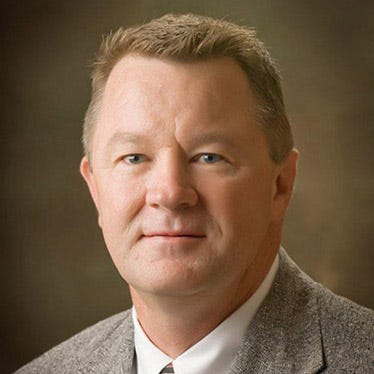How do you manage your hog operation through stressful times?
There are some best practices any producer, large or small, can leverage to keep their operation as healthy as possible.

There are many economic factors impacting the swine industry today. Nationally, we’ve expanded production over the past several years, creating an increase in pork supply. In order for the industry to be successful at these production levels, there are trade issues that must be resolved. Finally, we have expanding competitive meat production in both the beef and broiler industries, which are expected to continue in the near term.
During the past six months of negative margins and several months of significant losses, pork producers have started to feel some financial stress. Based on the Iowa State University model the last six months (August-January) averaged $25 per head in net loss. This is true for producers with reasonably good costs of production ($64-$66 per carcass hundredweight) and revenue equal to the average net paid price for pigs.
Over the past four years (2015-18) that model reflected a challenging time for the pork sector, very close to breakeven over the period (again assuming reasonably good cost of production and no major health challenges affecting performance). The results achieved by individual pork producers over time has been widely variable. Compeer maintains a database of clients that we analyze quarterly and cost of production typically varies by $6-8 per hundredweight ($15 per head) and revenue varies by $6-8 per hundredweight ($15 per head). It is clear that while the industry is feeling more stress, there are farms that continue to do quite well.
Impacts to the business
From a business perspective (and a lender’s) the No. 1 priority is working capital. Working capital is the current assets (cash, inventories, receivables) less the current liabilities (operating loans, payables and current maturities of long-term debt). This measures the business’ ability to make its short-term obligations. Generally, a minimum of $400 per sow in working capital in a farrow- to-finish operation is required.
Owner equity is a longer-term concern. At a minimum, your owner equity should equate to at least 40% of the total assets in a farrow-to-finish operation. Finally, your lender is going to look at long-term trends in your earnings based on the last three to four years. Can the farm generate the earnings to cover all obligations with some cushion or returns to the owners? This is starting to be challenged on some farms with the last four year history.
Financial performance
Typically, issues that separate farms regarding financial performance are: revenue, cost of production, capital spending and risk management. Additionally, pig health and/or diseases impact performance.
Reviewing revenue in several different ways can help identify areas of opportunity. First, reviewing revenue per pig or per hundredweight relative to some sort of standard, like the 201 report, has some value. Next compare revenue from an opportunity to maximize that revenue for the right weight for best value. Finally, compare revenue on the biological (pigs marketed per sow) or system basis to measure revenue to the capital costs of facilities, contracted or owned.
The cost issue is one we discuss frequently, but are costs of production in line with the industry? Capital spending is often a timing issue with growth and expansion of the production base. Expanding into a down cycle in the industry without an adequate capital cushion is a frequent point of pain for an operation. Developing a realistic projection to model various outcomes can help build the right long-term plan for the business and keep financial stress under control.
Finally, strong risk management separates many top producers in this industry. Clearly defining what the goals of risk management are and executing on the plan has proven to keep some farms performing at a high level through many cycles.
Summary
Over the decades, working with clients, I’ve witnessed lots of ups and downs. However, there are some best practices any producer, large or small, can leverage to keep their operation as healthy as possible.
Open communication with your lender. While always of value, during times of stress it’s even more critical to communicate often with your lender.
Know your numbers. Understand your working capital and the working capital trend in your business, to help your advisers guide you in the right direction.
Projections. Develop a long-term projection to understand the impacts to working capital and owner equity so that necessary changes in the business can be implemented sooner rather than later. Those changes might include revenue and cost of production, capital spending or reduction in assets held, along with decisions on risk-management that may not be so clear without a good understanding of the current financial situation or long-term plan.
Source: Kent Bang with Compeer Financial, who is solely responsible for the information provided, and wholly owns the information. Informa Business Media and all its subsidiaries are not responsible for any of the content contained in this information asset.
About the Author(s)
You May Also Like





